Someone Explains The 3rd Degree Burn Story Behind Why Drinks Have ‘Hot’ Labels In The US In Response To Canada Roasting Them
It’s a story that has been parodied, joked about and mocked – the McDonald’s hot coffee case. Through the telling and retelling of the infamous tale, the gist became that 79-year-old Stella Liebeck got burnt by some hot coffee from the fast-food restaurant and sued them. Well, duh, coffee is supposed to be hot, became the joke and Liebeck became the face of ignorant Americans.
The verdict for the lawsuit was delivered in 1994, but people still find ways to mercilessly mock the ordeal. One Canadian coffee shop even used it for marketing on their cups. Fed-up with people not knowing all the details there are many people who have responded to these jokes with the real facts of the case – delivering some burns of their own.
A coffee shop in Canada joined in on the numerous jokes that have been made about the McDonald’s ‘hot coffee case’ over the years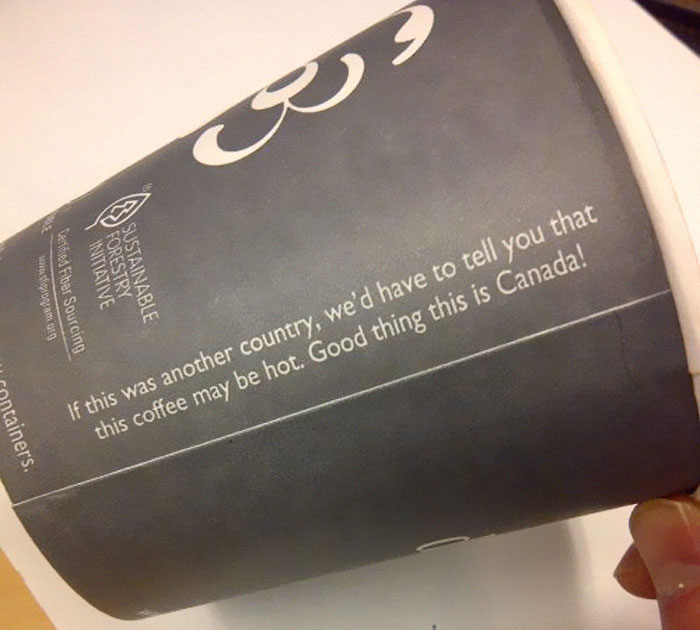


But some people, fed up with the gross mistelling of the case, were happy to share the facts
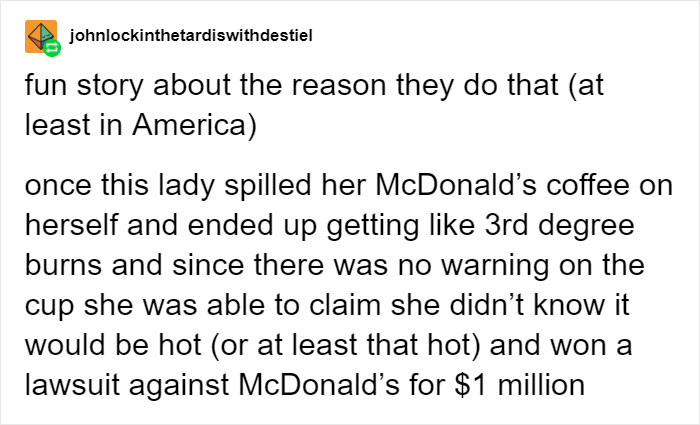
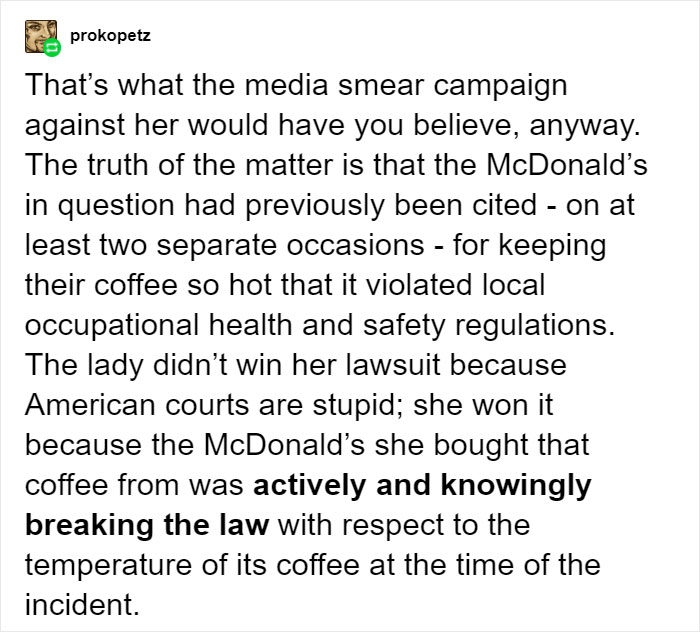
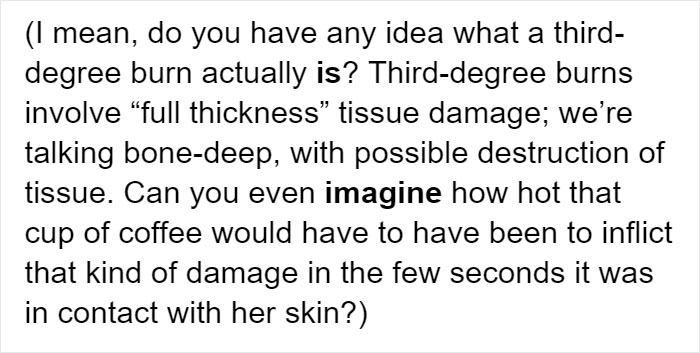
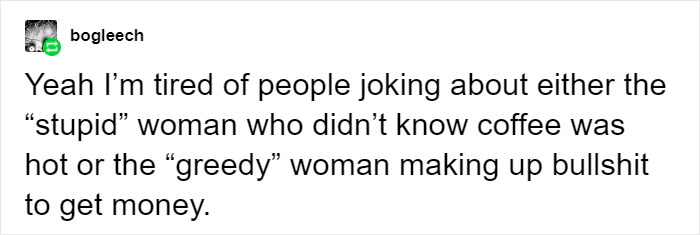
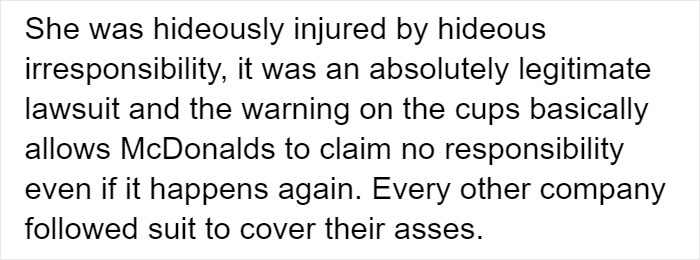
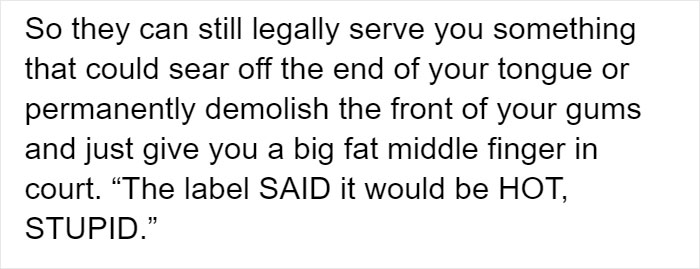
The name of the case is Liebeck v. McDonald’s and was misrepresented by the media as a frivolous case
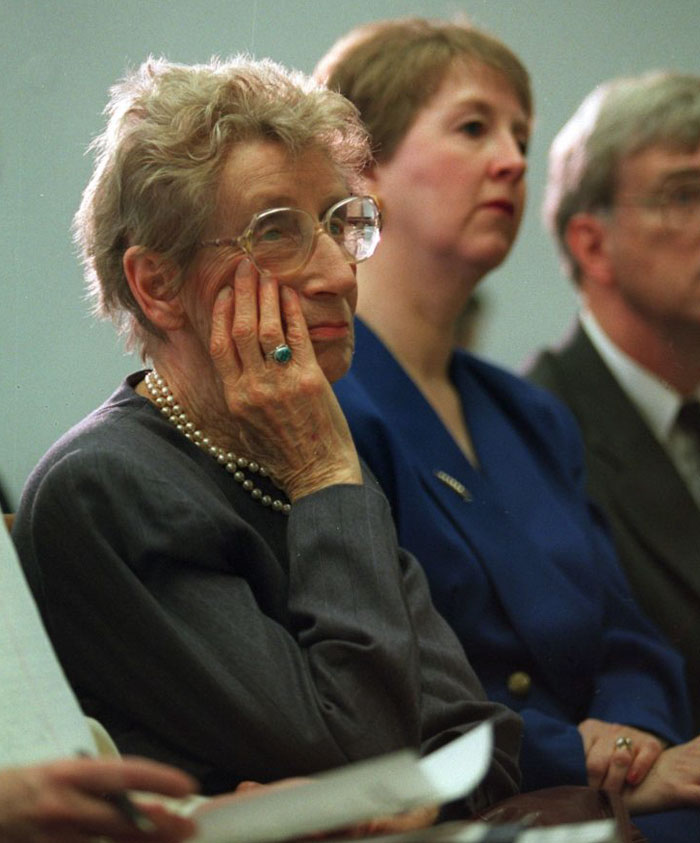
Image credits: JOE MARQUETTE/AP/Shutterstock
It all began in 1992 in a McDonald’s parking lot. Liebeck was sitting in the passengers’ seat of a car and had the cup held between her knees while she was removing the lid to add cream and sugar. The cup tipped over and spilled the coffee into her lap. Most of us have spilled a drink in our laps at one point or another but what happened to Liebeck next uncovered a pattern of negligence from the company.
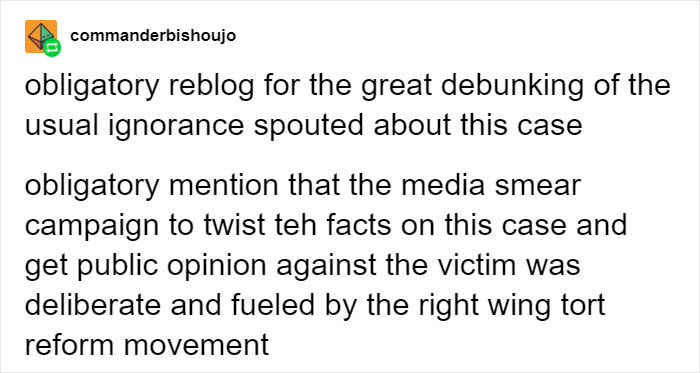
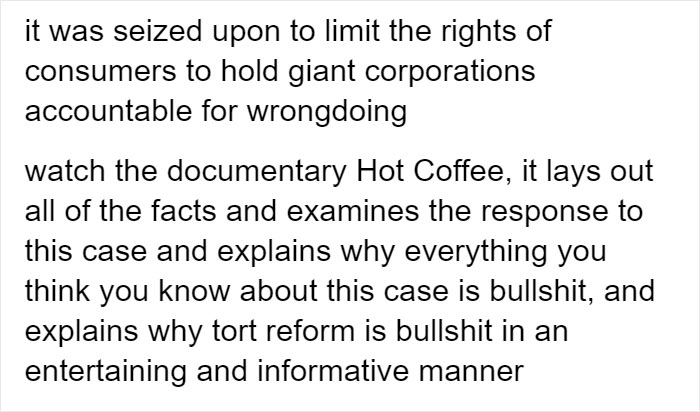
She suffered third-degree burns in three seconds through her clothes that covered 16 percent of her body, including her inner thighs and genitals. The coffee even burned away layers of muscle and fatty tissue. Liebeck had to be hospitalized for eight days and had to get skin grafts among other treatments. Her recovery spanned over the course of two years
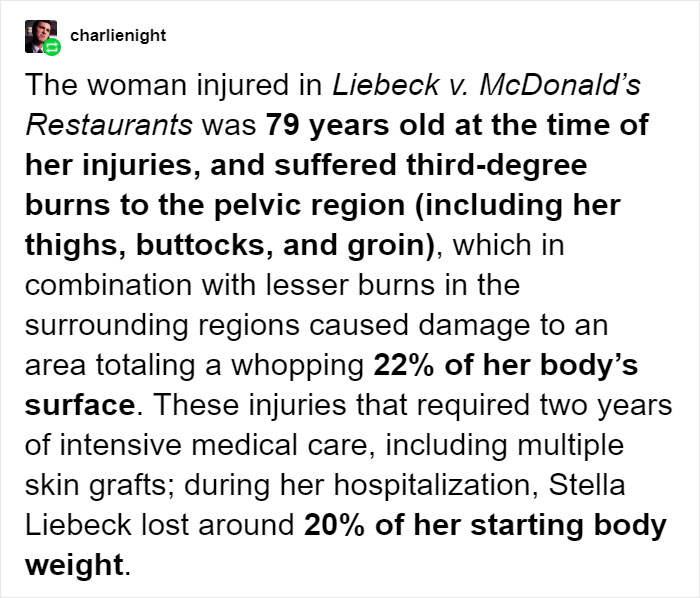
According to the American Museum of Tort Law: “Liebeck offered to settle the case for $20,000, but the company refused. McDonald’s offered Liebeck only $800—which did not even cover her medical expenses.”
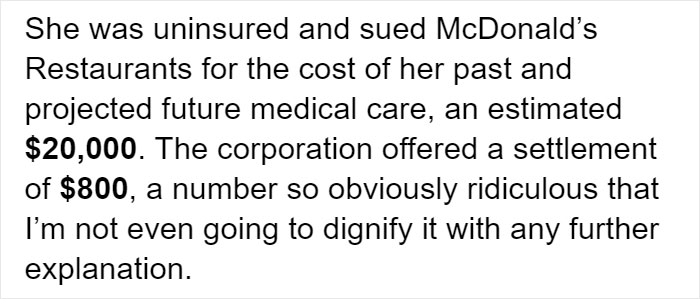
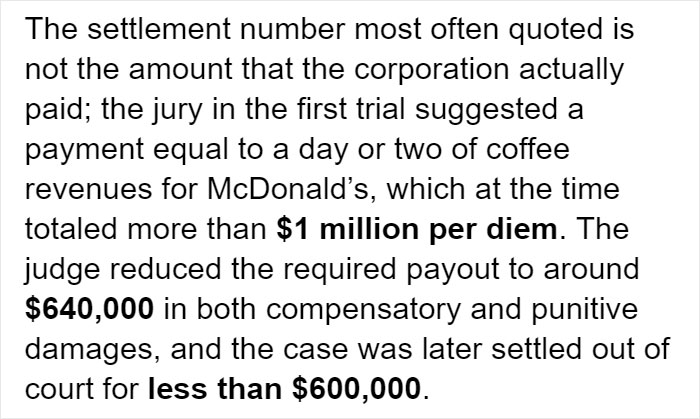
The importance of the case went beyond Liebeck though. During the trial, they heart from experts who said McDonald’s coffee was 30 to 40 degrees hotter other companies. The jury also hear testimonials and learned 700 other people—including children—had been burned before and despite this, the company had not changed its policy.
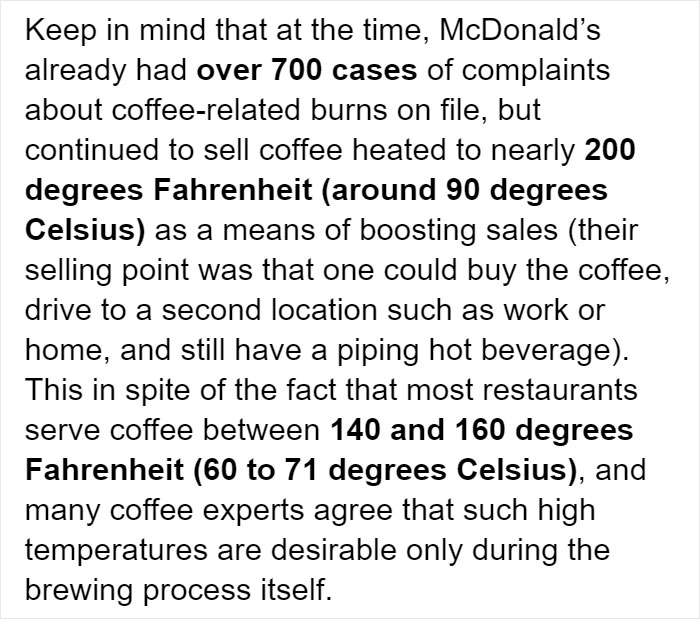 Kenneth Wagner, the Albuquerque lawyer who represented Liebeck, said: “We knew, before the lawsuit was filed, that the temperature of the water was 190 degrees or so, and the franchise documents required that of the franchise,” and explained, “Our position was that the product was unreasonably dangerous, and the temperature should have been lower,”
Kenneth Wagner, the Albuquerque lawyer who represented Liebeck, said: “We knew, before the lawsuit was filed, that the temperature of the water was 190 degrees or so, and the franchise documents required that of the franchise,” and explained, “Our position was that the product was unreasonably dangerous, and the temperature should have been lower,”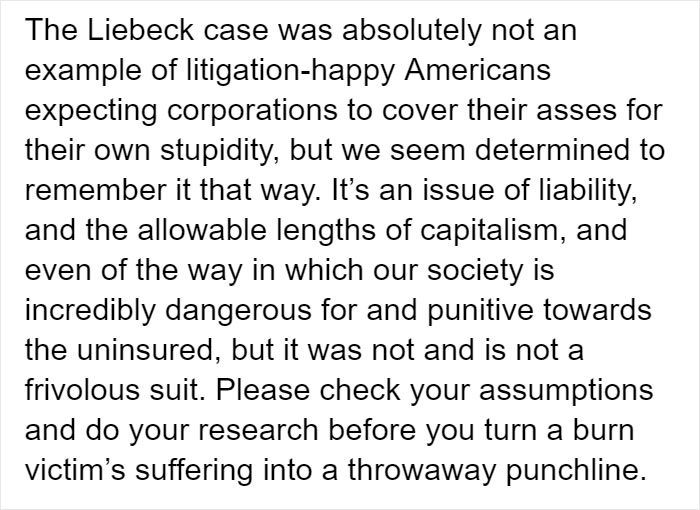
“The trial judge reduced the punitive damages to $480,000, while noting that McDonald’s behavior had been “willful, wanton, and reckless.” The parties later settled for a confidential amount. According to news accounts, this amount was less than $500,000,” states the American Museum of Tort Law.
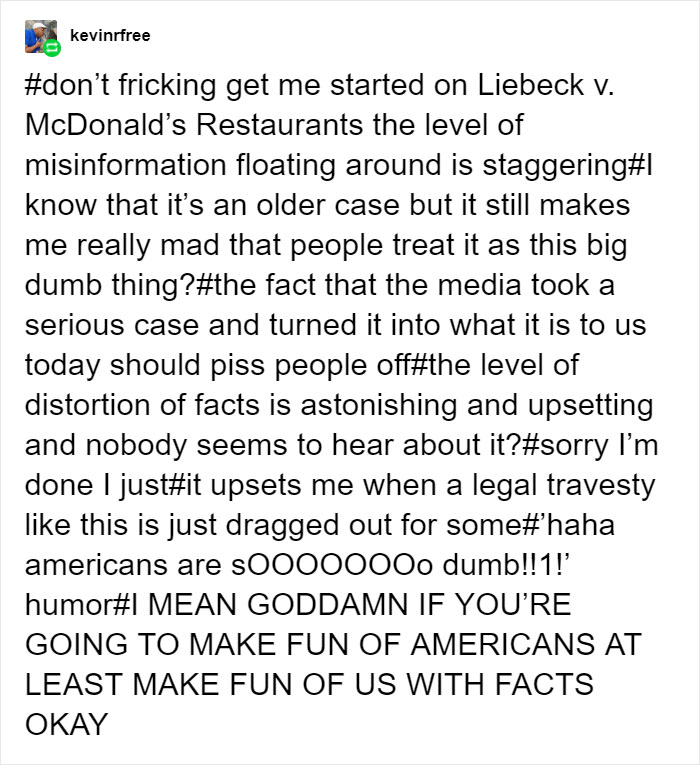 In an attempt to correct the skewed misrepresentation of the story trial lawyer Susan Saladoff made a documentary called “Hot Coffee,” in 2011. The film set out to shed light on the facts of the case and possibly change some of the public perceptions about Liebeck. Unfortunately even today, this story is still inaccurately retold and mocked.
In an attempt to correct the skewed misrepresentation of the story trial lawyer Susan Saladoff made a documentary called “Hot Coffee,” in 2011. The film set out to shed light on the facts of the case and possibly change some of the public perceptions about Liebeck. Unfortunately even today, this story is still inaccurately retold and mocked.



by Karolina Wv via Bored Panda - Source

No comments: